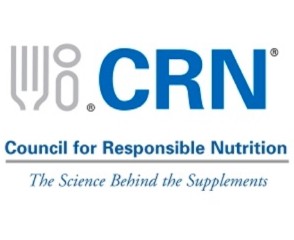Notes from Nutrition 2018 in Boston
Does the micronutrient disparity in the US deserve more attention?

Take for example the first chapter of the scientific report of the 2015 Dietary Guidelines Advisory Committee, posted on the Office of Disease Prevention and Health Promotion web page.
It lists vitamin A, vitamin D, vitamin E, vitamin C, folate, choline, calcium, fiber, iron, potassium and magnesium among ‘shortfall nutrients’ that Americans underconsume—but only vitamin D, calcium, potassium, and fiber shortfalls are categorized as a public health concern for the general population.
Dr. Jeffrey Blumberg, a senior scientist and professor at the Friedman School of Nutrition Science and Policy at Tufts University, opined that the other shortfall nutrients are not considered public health concerns because “their underconsumption hasn’t been linked in scientific literature to adverse health outcomes, [or] chronic disease.”
He was presenting his research on addressing ‘hidden hunger’ in the US—a term to describe the overconsumption of saturated fats, sodium and cholesterol but underconsumption of vitamins and minerals—during a breakfast at the Nutrition 2018 conference in Boston last weekend, organized by the American Society for Nutrition.
Host of the breakfast that morning was Washington DC-based Council for Responsible Nutrition (CRN), a trade group representing the dietary supplements industry.
Why does ‘Hidden Hunger’ matter?
‘Hidden Hunger’ is not felt at the stomach, “but it strikes at the core of your health and vitality,” he explained.
So what does this mean? “Chronic disease outcomes are often used and I don’t think those are the right ones to look at when talking about hidden hunger and filling those gaps,” he said.
“Instead, it should be enzyme activity, biomarkers for inflammation, oxidative stress, or glucoregulation. [These] deal with your physiological status now, and you can follow that over time, and that’s what we talk about—those kinds of physiological cellular functions, and maintaining and optimizing those, without talking about if you would ever get cancer of Alzheimer’s disease.”
There is emerging science looking at the link between micronutrient levels and quality of life issues as well as disability-adjusted life year, he added.
“I think that’s an area where it would be really interesting to look in more detail, where there is more available data, as opposed to always just saying ‘well if it doesn’t reduce the risk for myocardial infarction or breast cancer, then these things aren’t important.”
Related News
VIDEO: Trade groups are advocating for multivitamins to be eligible for government programs like SNAP or WIC
The trade group Council for Responsible Nutrition, or CRN, advocates for multivitamins to be eligible for purchase using government benefits like SNAP and WIC. READ MORE HERE
Disproportionately affects the poor
Micronutrient shortfalls disproportionately affect low-income US households, said Dr. Regan Bailey, an associate professor at the Department of Nutrition Science at Purdue University.
“This topic is so important because income disparities exist,” she told the audience that morning. She cited a 2016 study which found that the average life expectancy of the lowest-income classes in America are shorter than the rest, or as the Harvard Gazette put it, “equal to that in Sudan or Pakistan.”
Though not directly linking life expectancy to nutrient exposure, Dr. Bailey showed that patterns were similar between the two.
“Previous work has associated diet quality with income,” she said. “But it has largely been focused on foods, not foods inclusive of nutrients from dietary supplements,” which is the work that Dr. Bailey does with her team.
Analyzing the National Health and Nutrition Examination Survey (NHANES) data, Dr. Bailey and her team found that not only were low-income children were less likely to get appropriate nutrient exposure from their diets, but they were also less likely to consume multivitamins than children in other income groups.
“We see the same themes in adults, if you’re food secure, you’re more likely to have nutrient intake exposures,” she said.
















